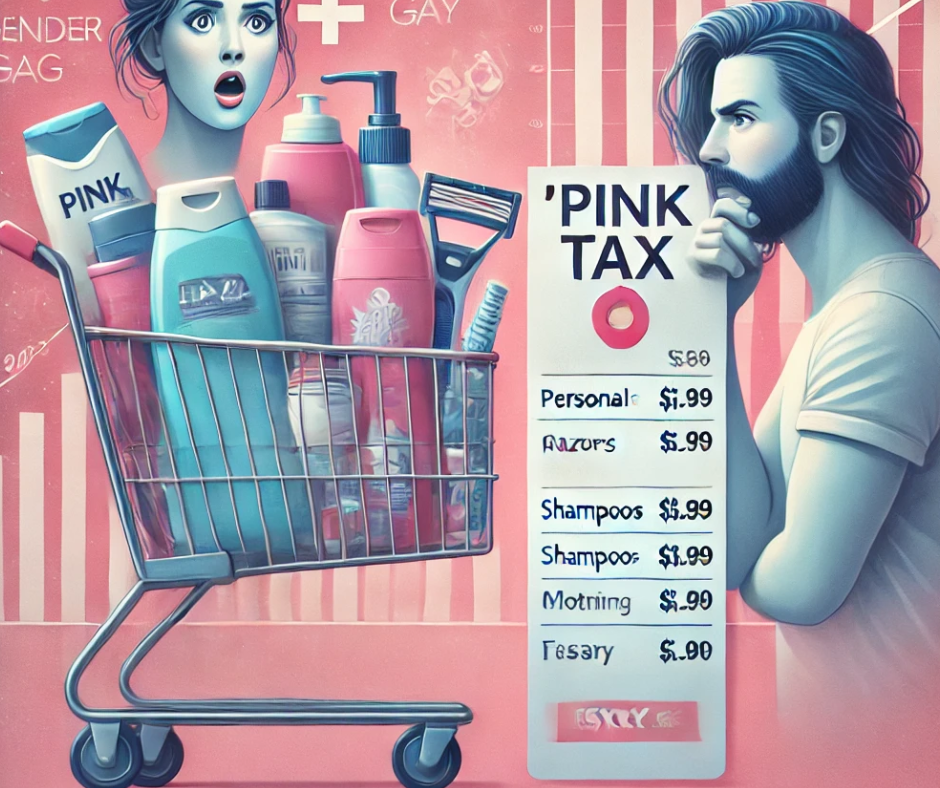Pink Tax & Gender Pay Gap: How It Affects Women’s Financial Independence
The Silent Surcharge: Pink Tax and How It Eats into Women’s Earnings
Understanding the Pink Tax: A Hidden Cost on Women’s Finances
Have you ever noticed that products and services marketed to women often cost more than similar ones for men? This hidden price disparity, known as the pink tax, is an invisible financial burden placed on women for everything from personal care items to professional services.
What makes this worse? When combined with the gender pay gap and income tax, women end up with significantly less disposable income over their lifetime, widening financial inequality.
It’s time to look beyond symbolic gestures and push for meaningful tax reforms and policy solutions to empower women financially.

Pink Tax & Gender Pay Gap: How It Affects Women’s Financial Independence
Decoding the Pink Tax
The pink tax isn’t an official tax—it’s an implicit cost that women bear simply because products and services tailored for them are priced higher than men’s versions. Studies worldwide have highlighted these disparities:



Example of Gendered Pricing:
| Product/Service | Women’s Price (₹) | Men’s Price (₹) | Price Difference (%) |
|---|---|---|---|
| Razor | 250 | 200 | 25% |
| Shampoo | 350 | 300 | 17% |
| Haircut | 500 | 300 | 40% |
| Dry Cleaning | 200 | 150 | 33% |

Income Tax & Women’s Financial Standing
Women in India have made remarkable progress in workforce participation, yet they still earn 28% less than men, according to the World Economic Forum’s Gender Gap Report 2024.
While income tax laws do not explicitly discriminate against women, they fail to address the financial disparities women face due to gendered pricing and wage gaps.



Tax Reforms for Financial Equality
Although India’s tax policies are largely gender-neutral, targeted tax reforms could help level the financial playing field. Here are some much-needed reforms:
1. Gender-Based Tax Rebates

2. GST Reductions on Women-Centric Products

3. Enhanced Deductions for Women Entrepreneurs

4. Tax Benefits on Caregiving Expenses

5. Higher HRA Exemptions for Women

Beyond Tax Reforms: A Path to True Financial Independence
While tax reforms can help, we need a multi-faceted approach to eliminate financial discrimination against women:
1. Consumer Awareness Campaigns

2. Regulatory Oversight on Gendered Pricing

3. Financial Literacy Programs for Women

Conclusion: A Call for Change
Women already navigate lower wages and higher expenses, and the combined effect of pink tax and income tax further widens financial inequality. While income gaps receive attention, hidden gendered costs often go unnoticed.



Disclaimer—Estabizz Fintech Private Limited
At Estabizz Fintech Private Limited, we provide insights into financial planning, taxation, and economic policies impacting individuals and businesses. However, this article is for informational purposes only and should not be considered financial, investment, or tax advice.
Readers are encouraged to consult financial experts or tax professionals before making any financial decisions. Policies and taxation laws are subject to change, and individuals must stay updated with government regulations.



https://www.estabizz.com/pink-tax-gender-pay-gap-women-independence/
http://Pink Tax, Gender Pay Gap,




